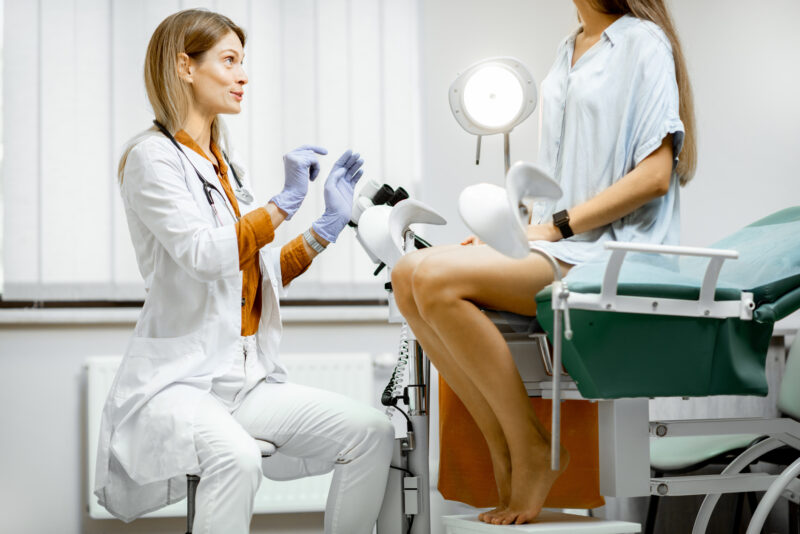National Cervical Cancer Awareness Week

Time to Catch Up is this year’s National Cervical Cancer Awareness Week’s theme. With the uncertainty and ongoing impacts from the COVID-19 pandemic, more women have fallen behind in keeping up to date with their cervical screening.
Cervical cancer is one of the only truly preventable cancers. When detected early through routine cervical screening it is also curable1.
Nearly all cervical cancer cases can be attributed to Human papillomavirus (HPV) infection. There are over 100 types of HPV, and many do not cause problems. Majority of HPV infections will clear up on their own without intervention, however a small proportion of infections, with certain high-risk types of HPV, can persist and progress into cervical cancer. In women with healthy immune systems, cervical cancer can take up to 20 years to develop5..
Modern cervical cancer programmes are built around three key initiatives:
- HPV vaccination of young girls
- Routine cervical cancer screening for women
- Adequate management and treatment of pre-cancerous and cancerous lesions
The HPV vaccination and routine screening are the key elements that make this a preventable disease.
Organised screening programmes involve the routine testing of an asymptomatic, or “healthy”, population. The primary goal of cervical screening is to detect pre-cancerous and cancerous cervical changes, allowing for timely treatment and management to and prevent death from cervical cancer.
Australia's National Cervical Screening Program

Cervical cancer is the 14th most common cancer for women in Australia, with over 900 women expected to be diagnosed with cervical cancer this year2.
Australia has one of the highest participation rates in cervical screening globally and is largely on track to be one of the first countries to eliminate cervical cancer3. In 1991 Australia commenced the National Cervical Screening Programme (NCSP). Australia’s NCSP is an organised screening program, funded through the public health system.
In the 30 years since its inception, participation in the programme has continued to grow with approximately 6 in 10 eligible women now routinely participating in the NCSP. However, for women living in low socioeconomic and remote areas participation rates are significantly lower, with about 40-50% of women participating. As such, cervical cancer disproportionately affects Indigenous women, with the incidence rate for First Nations Women twice as high as the national rate3.
In countries with effective and robust cervical screening and treatment programmes, the overall cervical cancer mortality rate has been reduced fivefold over the last 50 years4. But even in these countries, there are in-country inequalities that need to be addressed2.
The conventional screening methods employed in high income countries have not been successful in low- and middle-income countries (LMICs)5.
Beyond our boarders
Globally, cervical cancer is the 4th most common cancer, with one woman being diagnosed every 2 minutes. Nearly 90% of the 600,000+ annual cases occur in LMICs6.
A lack of effective screening programs, aimed at detecting and treating precancerous conditions, is a key reason for the higher cervical cancer incidence and mortality rates throughout LMICs7. In LMICs there often is limited access to preventative measures, like screening, meaning that cervical cancer is commonly not identified until it has advanced, and the patient presents with symptoms. In addition, access to adequate treatment of late-stage disease can often be very limited, resulting in a higher mortality rate in these countries.8
TruScreen believes that all women, no matter who or where they are, should have access to high-performance screening. Our screening solution is ideal for communities that can’t access conventional laboratory-based screening methods.
References
[1] WHO guideline for screening and treatment of cervical pre-cancer lesions for cervical cancer prevention, second edition. Geneva: World Health Organization; 2021. Licence: CC BY-NC-SA 3.0 IGO.
[2] Australia Government Cancer Australia, Cervical cancer in Australia statistics. https://www.canceraustralia.gov.au/cancer-types/cervical-cancer/statistics
[3] Lisa J. Whop, Megan A. Smith, Tamara L. Butler, Anna Adcock, Karen Bartholomew, Marc T. Goodman, Rachel L. Winer, Elizabeth Milosevic, Beverley Lawton, Achieving cervical cancer elimination among Indigenous women, Preventive Medicine,Volume 144, 2021, 106314, ISSN 0091-7435, https://doi.org/10.1016/j.ypmed.2020.106314. (https://www.sciencedirect.com/science/article/pii/S0091743520303388)
[4] Denny L, Kuhn L, Hu CC, Tsai WY, Wright TC, Jr. Human papillomavirus-based cervical cancer prevention: long-term results of a randomized screening trial. J Natl Cancer Inst. 2010;102(20):1557-67. doi:10.1093/jnci/djq342
[5] Sherris J, Herdman C, Elias C. Cervical cancer in the developing world. West J Med. 2001;175(4):231-233. doi:10.1136/ewjm.175.4.231
[6] Ferlay J, Ervik M, Lam F, Colombet M, Mery L, Piñeros M, Znaor A, Soerjomataram I, Bray F (2018). Global Cancer Observatory: Cancer Today. Lyon, France: International Agency for Research on Cancer. Available from: https://gco.iarc.fr/today
[7] Sherris J, Herdman C, Elias C. Cervical cancer in the developing world. West J Med. 2001;175(4):231-233. doi:10.1136/ewjm.175.4.231
[8] WHO Human papillomavirus (HPV) and cervical cancer fact sheet. November 2020. https://www.who.int/news-room/fact-sheets/detail/human-papillomavirus-(hpv)-and-cervical-cancer